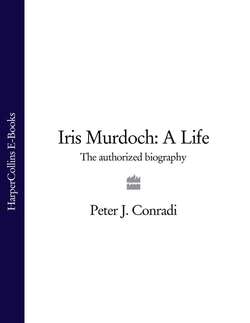Читать книгу Iris Murdoch: A Life: The Authorized Biography - Peter Conradi J. - Страница 31
4
ОглавлениеAt a Christmas fancy-dress party soon after the First World War, BMB arrived disguised as the League of Nations. This might suggest an unusual depth of identification. The League played a great part in the Badminton girls’ lives, BMB arguing that it guaranteed both democracy and peace. Many girls delivered leaflets on disarmament and talked to local residents about such matters, collecting signatures for petitions. Membership of the Junior League cost one shilling a term. One girl, Annette Petter, was asked by BMB why she alone did not belong. ‘Because, Miss Baker,’ she replied with brave good humour, greatly encouraged by BMB’s belief in free speech, ‘my father manufactures aeroplane engines.’43 This did not go down too well.
Each girl carried a copy of the article dealing with sanctions from the covenant of the League of Nations in her pocket; and bevies of students went to the annual League Summer School in Geneva. In August 1935 Iris went for ten days44 with a party of seven. It was her first trip abroad. They had a calm Channel crossing, and Iris was too excited to sleep more than two hours on the subsequent train journey. She sent enthusiastic postcards home of the Mer-de-Glace on Mont Blanc, the monument to heroes of the Reformation, and – in colour – the Palace of Nations itself. The group was received by the acting Secretary-General, shown round old Geneva, climbed both the Mer-de-Glace and Mont Salève ('exhausting'), and bathed often in the lake, as ‘blue-as-blue’.
Ice-creams cost them 1/6d each. They stayed in a luxurious hotel – their room had a balcony, private bathroom and telephone – talking to the femme de chambre every night to improve their French.45 There were high-minded lectures, and they were impressed by the Assembly’s facilities for instantaneous translation. Iris sent home peremptory instructions: ‘You needn’t write again after answering this.’ And Hughes and Rene were ‘not to be late’ in meeting her train back ‘at 6.06 the following Monday’.
‘Are your family interested in politics? Are they right or left wing?’ BMB asked one teacher who was being interviewed for a post. ‘We’re all left wing here, you know.’ Another teacher, asked by a first former, ‘What are politics?’, riposted, ‘Why do you want to know?’ ‘I am going to sit by Miss Baker at lunch … Miss Baker is interested in politics, but I don’t know what they are.’ BMB, who liked to tell this story, talked to the girl about her favourite pudding instead – the intensity was sometimes relaxed. But some members of the staff were reluctant to sit next to BMB if they had not read the Times leader that day. BMB subscribed to the Left Book Club, took students on field trips to the local Wills’ cigarette factory; there were weekly current-events discussions on the international situation; refugees from the Spanish Civil War were invited to speak.46
The political scene at the time was indeed dramatic. On 7 March 1936 Hitler invaded the Rhineland. Iris heard the newspaper-sellers on the main road calling out the ominous news in the late evening, and saw BMB, aged sixty, running down the drive to buy a paper. Those of left-wing tendencies commonly regarded the Soviet Union as a place of hope and wished for closer ties with it – Iris later wrote: ‘Jesus, as teacher, shared the stage in morning prayers with a large variety of other mentors, including Lenin.’ Indeed staff sometimes addressed each other as ‘Com’, for Comrade, to indicate friendliness. One observer even compared the school to the USSR: ‘a democracy with a very strong leader’. This is doubly ironic. BMB was no Stalin. Nor was either institution precisely a democracy. This illuminates Iris’s own later Communist Party membership. She once remarked that she was a Communist by the age of thirteen.47
BMB started by getting three refugee girls into the school, then rented a house nearby where she placed ten more refugees, from Germany, Austria and Czechoslovakia, mostly children of mixed marriages. Christians and Jews, she explained, were aided by their co-religionists, while children of mixed marriages had no such advocates. The Badminton girls were proud of their ‘foreign friends’, and treated them more kindly than they did their own compatriots. Soon the school bulged at every seam. BMB once asked the Jewish girls to organise a seder, which she attended, and was deeply moved. And she found a rest-home for the mother of Margot Slade (Friedland), one of the refugee girls, where she could recuperate from the trauma of her years under the Nazis. Iris commented: ‘We knew about the concentration camps considerably before this idea was taken seriously by the general public.’
Indira Gandhi later recalled groups of senior girls sharing living quarters with a teacher, and having to help look after the housekeeping. On Sunday mornings the Jewish and Indian girls would go for walks in groups of four. Indira would lead one group. On 10 December 1936 a gym session was interrupted and the girls asked to hurry into the next room for some special news, without waiting to get dressed in their smart afternoon wear. Indira recalled their squatting on the floor in their navy-blue gym tunics to listen to Edward VIII’s abdication broadcast. The atmosphere was charged with emotion. Many were in tears.
